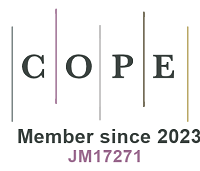REFERENCES
2. Vitale D, Morales Suárez-varela M, Picó Y. Wastewater-based epidemiology, a tool to bridge biomarkers of exposure, contaminants, and human health. Curr Opin Environ Sci Health 2021;20:100229.
3. Daughton CG. Illicit drugs: contaminants in the environment and utility in forensic epidemiology. In: Whitacre DM, editor. Reviews of Environmental Contamination and Toxicology Volume 210. New York: Springer; 2011. pp. 59-110.
4. Sims N, Kasprzyk-Hordern B. Future perspectives of wastewater-based epidemiology: monitoring infectious disease spread and resistance to the community level. Environ Int 2020;139:105689.
5. Daughton CG. Monitoring wastewater for assessing community health: Sewage Chemical-Information Mining (SCIM). Sci Total Environ 2018;619-620:748-64.
6. Rice J, Kasprzyk-hordern B. A new paradigm in public health assessment: Water fingerprinting for protein markers of public health using mass spectrometry. TRAC-Trend Anal Chem 2019;119:115621.
7. Vermeulen R, Schymanski EL, Barabási AL, Miller GW. The exposome and health: where chemistry meets biology. Science 2020;367:392-6.
8. Wild CP. Complementing the genome with an “exposome”: the outstanding challenge of environmental exposure measurement in molecular epidemiology. Cancer Epidemiol Biomarkers Prev 2005;14:1847-50.
9. Picó Y, Barceló D. Mass spectrometry in wastewater-based epidemiology for the determination of small and large molecules as biomarkers of exposure: toward a global view of environment and human health under the COVID-19 outbreak. ACS Omega 2021;6:30865-72.
10. Andrés-costa MJ, Andreu V, Picó Y. Liquid chromatography-mass spectrometry as a tool for wastewater-based epidemiology: assessing new psychoactive substances and other human biomarkers. TrAC Trends Anal Chem 2017;94:21-38.
11. Boogaerts T, Quireyns M, Covaci A, De Loof H, van Nuijs ALN. Analytical method for the simultaneous determination of a broad range of opioids in influent wastewater: optimization, validation and applicability to monitor consumption patterns. Talanta 2021;232:122443.
12. Kinyua J, Psoma AK, Rousis NI, et al. Investigation of biotransformation products of p-methoxymethylamphetamine and dihydromephedrone in wastewater by high-resolution mass spectrometry. Metabolites 2021;11:66.
13. Andrés-Costa MJ, Andreu V, Picó Y. Analysis of psychoactive substances in water by information dependent acquisition on a hybrid quadrupole time-of-flight mass spectrometer. J Chromatogr A 2016;1461:98-106.
14. Mastroianni N, López-García E, Postigo C, Barceló D, López de Alda M. Five-year monitoring of 19 illicit and legal substances of abuse at the inlet of a wastewater treatment plant in Barcelona (NE Spain) and estimation of drug consumption patterns and trends. Sci Total Environ 2017;609:916-26.
15. Thomas KV, Bijlsma L, Castiglioni S, et al. Comparing illicit drug use in 19 European cities through sewage analysis. Sci Total Environ 2012;432:432-9.
16. Burgard DA, Banta-Green C, Field JA. Working upstream: how far can you go with sewage-based drug epidemiology? Environ Sci Technol 2014;48:1362-8.
17. Gao J, O'Brien J, Du P, et al. Measuring selected PPCPs in wastewater to estimate the population in different cities in China. Sci Total Environ 2016;568:164-70.
18. Castiglioni S, Senta I, Borsotti A, Davoli E, Zuccato E. A novel approach for monitoring tobacco use in local communities by wastewater analysis. Tob Control 2015;24:38-42.
19. Ryu Y, Barceló D, Barron LP, et al. Comparative measurement and quantitative risk assessment of alcohol consumption through wastewater-based epidemiology: An international study in 20 cities. Sci Total Environ 2016;565:977-83.
20. Rousis NI, Gracia-Lor E, Zuccato E, et al. Wastewater-based epidemiology to assess pan-European pesticide exposure. Water Res 2017;121:270-9.
21. Lopardo L, Petrie B, Proctor K, Youdan J, Barden R, Kasprzyk-Hordern B. Estimation of community-wide exposure to bisphenol A via water fingerprinting. Environ Int 2019;125:1-8.
22. Ryu Y, Gracia-Lor E, Bade R, et al. Increased levels of the oxidative stress biomarker 8-iso-prostaglandin F(2α) in wastewater associated with tobacco use. Sci Rep 2016;6:39055.
23. Alygizakis N, Markou AN, Rousis NI, et al. Analytical methodologies for the detection of SARS-CoV-2 in wastewater: protocols and future perspectives. Trends Analyt Chem 2021;134:116125.
24. Barceló D. Wastewater-Based Epidemiology to monitor COVID-19 outbreak: present and future diagnostic methods to be in your radar. Case Stud Therm Eng 2020;2:100042.
25. Carrascal M, Abian J, Ginebreda A, Barceló D. Discovery of large molecules as new biomarkers in wastewater using environmental proteomics and suitable polymer probes. Sci Total Environ 2020;747:141145.
26. Perez-lopez C, Ginebreda A, Carrascal M, Barcelò D, Abian J, Tauler R. Non-target protein analysis of samples from wastewater treatment plants using the regions of interest-multivariate curve resolution (ROIMCR) chemometrics method. J Environ Chem Eng 2021;9:105752.
27. Casanovas A, Carrascal M, Abián J, López-Tejero MD, Llobera M. Discovery of lipoprotein lipase pI isoforms and contributions to their characterization. J Proteomics 2009;72:1031-9.
28. Kuhn R, Benndorf D, Rapp E, Reichl U, Palese LL, Pollice A. Metaproteome analysis of sewage sludge from membrane bioreactors. Proteomics 2011;11:2738-44.
29. Westgate PJ, Park C. Evaluation of proteins and organic nitrogen in wastewater treatment effluents. Environ Sci Technol 2010;44:5352-7.
30. Zhang P, Zhu J, Xu XY, Qing TP, Dai YZ, Feng B. Identification and function of extracellular protein in wastewater treatment using proteomic approaches: a minireview. J Environ Manage 2019;233:24-9.







